Grant left the ice early and Nolan Yonkman stayed on late which is a good sign that Grant will play. Grant had six goals and 12 points in 19 games with Norfolk (AHL).

Grant left the ice early and Nolan Yonkman stayed on late which is a good sign that Grant will play. Grant had six goals and 12 points in 19 games with Norfolk (AHL).

Baertschi continues to come in and out of the lineup. He has dressed for the last nine games posting one goal and three assists with a minus-2 rating. He was out on the ice late today which suggests he will sit with Paul Byron coming in.
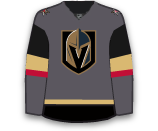
Breen who was recalled on Monday played 11:44 and was a minus-1 in Friday's loss to the Ducks. He will take a seat tonight in favour of Shane O'Brien.

O'Brien had been a healthy scratch for the last two games, but he will replace Chris Breen in the lineup tonight vs. Los Angeles. He has two assists while averaging 10:22 through 21 games.

There is no word on who will come out for the Flames but Byron is in. Byron has five goals and 13 assists in 23 games with Abbotsford (AHL) this season. Byron is a 24-year-old centre who was drafted 178th overall in 2007 and has spent the three seasons in the Flames system.
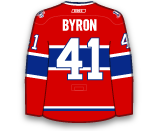
As expected Selanne will sit and rest with the Ducks in the second game of a back-to-back. The veteran has struggled this season, he has not recorded a point since October 27 - a span of 12 games. It has been 15 games since he has scored his last goal.
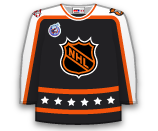
Del Zotto has been a healthy scratch in the last two games but will return to the blueline tonight with John Moore coming out. Del Zotto played 17:21 with a minus-2 rating in his last appearance.

Orlov was recalled from Hershey this morning and will be in the lineup tonight vs. the Islanders. He has three goals and nine points in 11 games with Hershey. In 65 career NHL games he has 20 points (3G / 17A).

This will be the first time that Erat has dressed since demanding a trade earlier in the week. It has been a tough season for the 32-year-old who has tallied just six assists in 23 games. He is expected to dress on the fourth line with Michael Latta being sent down this morning.
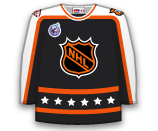
de Haan was recalled on Thursday, but was a healthy scratch on Friday. He will be inserted into the lineup tonight with Radek Martinek coming out. The 2009 12th overall pick has just one game of NHL experience (2011-12). In 17 games with Bridgeport (AHL) this season he had one goal and two assists. He was a good offensive defenseman in the OHL, but has yet to excel offensively in the AHL to this point (2G / 18A in 76 games).

Nelson continues to shuffle in and out of the Islanders lineup. He played 13:41 and was a minus-1 with three shots on goal vs. the Red Wings last night.

The Islanders are hoping that the night off helps spark some offence in Bailey who has just two assists in 13 games in November. He has four goals and 10 points in 25 games on the season, but the Isles are looking for more from a forward who plays in the top-6 on a nightly basis. Brock Nelson comes out of the lineup in favour of Bailey.
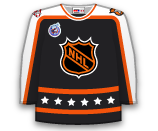
With Zach Parise making a miraculous return to the lineup tonight, Fontaine takes a seat. Fontaine has six goals and one assist in with a plus-7 rating in 26 games this season.

Bailey has four goals and six assists in 25 games, however he has just two assists and a minus-3 rating in 13 games in November. Bailey has 11 goals and eight assists in 38 games last season, so he has clearly taken a step back to begin the season.

It would be the second time in three games that Holland has been scratched. He is expected to take a seat while Jay McClement shifts back to center and Carter Ashton draws in on the wing. Holland has one goal while averaging 12:32 TOI in five games with Toronto since coming over from Anaheim.
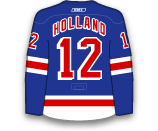
A healthy scratch for the last six games, Sharks defenseman Matt Irwin will return to the lineup against the Kings on Wednesday. “It’s just time to get him playing again. He shoots the puck a lot, he gives the power play a bit of a pop, and he’ll get that opportunity,” head coach Todd McLellan said. Irwin will be paired with Dan Boyle, while Justin Braun and Marc-Edouard Vlasic will reunite. The third pair will be Brad Stuart and Scott Hannan.

Hossa missed the last two games because of a personal matter, but will be back in the lineup tonight. He has 10 goals and seven assists with a plus-15 rating in 20 games. Activate him in all formats.
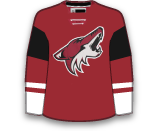
Raffl has been a healthy scratch for the last seven games, but will play tonight. My guess would be Jay Rosehill comes out and Raffl slots in on the fourth line. He has one assist and a minus-2 rating in 11 games.
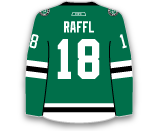
The Coyotes placed Rostislav Klesla on waivers yesterday, he cleared so likely going to the AHL, so Murphy will be in the lineup tonight. Murphy played 22:32 and scored his first career goal in his NHL debut on November 16. He scored in the NHL before he scored in the AHL, posting five assists in 12 games with Portland.

Gardiner struggled against the Blue Jackets on Monday so he will take a seat to night in favour of Paul Ranger. Don't expect Gardiner to sit out too many games, but this coach Randy Carlyle sending him a message, that he needs more out of the young D-man.
